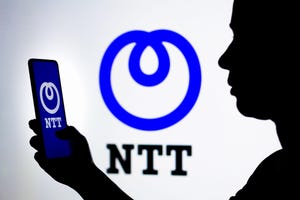The market for tunable lasers is taking a long time to develop. So long, in fact, that some analysts are dropping out of it
July 9, 2002

After speaking to carriers and vendors, Communications Industry Researchers Inc. says it won't be publishing a report on tunable lasers this year -- a fact that speaks volumes about the current state of the tunable laser market.
Basically, according to Lisa Huff, a CIR analyst, there isn't one.
"It really doesn't pay for us to focus on it," she says. The bottom line is, if there's no market, then no one is going to be very interested in buying a report about it.
Huff's comments confirm what everyone has suspected for a while. Even though trials and demos of tunable laser-based systems continue, things haven't changed at the top of the food chain -- carriers still aren't spending.
Tunable laser vendors -- Agility Communications Inc. and Bandwidth9 Inc. among them -- are fond of saying that every system vendor has tunable lasers on its roadmap. That may be true, but the problem is that they won't be needed in volume for a long while yet.
All the reasons previously given for delays in the market still hold true. Carriers aren't spending on equipment, and they have inventory backlogs of fixed-wavelength lasers that they need to run through before considering tunables.
Huff, for example, says tunables won't start selling in volume until 2004 at the earliest.
"Carriers remain cautious on capex issues," CIR said in a June 2001 report on tunable lasers. "Their current focus is on maximizing current infrastructures and deferring spending on more esoteric and even risky technologies. This apparently includes tunable technologies -- for example, the carriers with whom CIR regularly speaks have expressed reservations on the stability and reliability of tunable lasers."
That view hasn't changed in the intervening 12 months. If anything, things have gotten worse, with more carrier spending cuts and deflated revenues and stock prices hurting the companies that would buy tunable lasers for new systems designs.
Agility's VP of marketing, Kevin Affolter, is slightly more optimistic -- he reckons his company will see volume shipments starting in mid-2003. But whichever way you look at it, that means another year (at least) before there's any money to be made, and few startups will have enough cash to last that long.
Agility might be one of the survivors, since it still has $80 million in the bank, according to Huff. Santur Corp. is another startup with a chance, since it has recently scored a funding round (see Tunable Lasers: Back in Fashion?).
Larger public companies might be in better shape to survive the slowdown, because they have other products in their portfolio. These companies include Agere Systems (NYSE: AGR), Fujitsu Network Communications Inc. (FNC), and JDS Uniphase Corp. (Nasdaq: JDSU; Toronto: JDU).
The first casualties are already appearing. Bandwidth9 recently laid off more than half its workforce and is reportedly down to R&D staff only (see Bandwidth9 Behind Schedule?). Meanwhile, ADC Telecommunications Inc. (Nasdaq: ADCT) plans to close its Swedish manufacturing plant, home of the former Altitun, with the loss of 150 jobs (see ADC Tunes Out).
Nortel Networks Corp. (NYSE/Toronto: NT) has also suffered heavy layoffs in its components division, which it is now trying to sell (see Nortel Falls Short in Long Haul, and Nortel Gambles $1.43 Billion On Tunable Lasers).
Furthermore, New Focus Inc. (Nasdaq: NUFO) sold its tunable laser business to Intel Corp. (Nasdaq: INTC) because, according to its CFO, Bill Potts, "there was still an issue with manufacturing and packaging, and we didn't want to deal with that ourselves" (see Intel Scoops Up New Focus Laser Unit).
Is it all doom and gloom? Not quite. Fujitsu claims that it only ships systems with tunables in. It has four lambda transponders on all its Flashwave products and 22 lambdas on its DWDM long haul systems, according to Mike Susong, its director of industry relations. These lasers are very close in function to fixed wavelength Distributed Feedback (DFB) Lasers.
However, Fujitsu doesn't say how many systems it is actually shipping at present. And the economics of deploying tunable lasers are different in Fujitsu's case because it has a captive components supply.
Iolon Inc. has also been making headlines recently because its lasers have found their way into several demonstrations, including those of Corvis Corp. (Nasdaq: CORV) and Innovance Networks at the recent Supercomm show (see Vendors Aim to Cut Costs in Core).
Huff says she believes that Iolon gets these deals because it buys subcomponents from elsewhere and assembles them, rather than fabricating a laser from scratch, and can turn orders around quickly as a result. But she doubts that Iolon can bring its prices down sufficiently in the long run with this business model.
Finally, the Optical Internetworking Forum (OIF) effort to put together a multi-source agreement (MSA) for tunable lasers is nearing completion, according to Iolon's Erik Selvik, who edits the document. When it is complete, the MSA will make it easier for systems integrators to design in tunable lasers by specifying a form fit, connector, and communications interface for tunable laser modules, he says.
"We came into this project with as many different devices as there are tunable laser vendors," says Selvik. "And in coming to a common form factor, we've all had to make sacrifices. Right now, I feel we're all in the same boat [trying to stay afloat], rather than competing with each other yet."
For now, such projects are based on the hope that a real market will develop for tunable lasers. For that to happen, there must be systems manufacturers who are ready to build and ship next-generation product. Clearly, right now, such plans have been put on hold.
— Pauline Rigby, Senior Editor, Light Reading
http://www.lightreading.comWant to know more? The big cheeses of the optical networking industry will be discussing this very topic at Opticon 2002, Light Reading’s annual conference, being held in San Jose, California, August 19-22. Check it out at Opticon 2002.
Register now and save $500 off the registration fee. Just use the VIP Code C2PT1LHT on your registration form, and deduct $500 from the published conference fee. It's that simple!
You May Also Like









